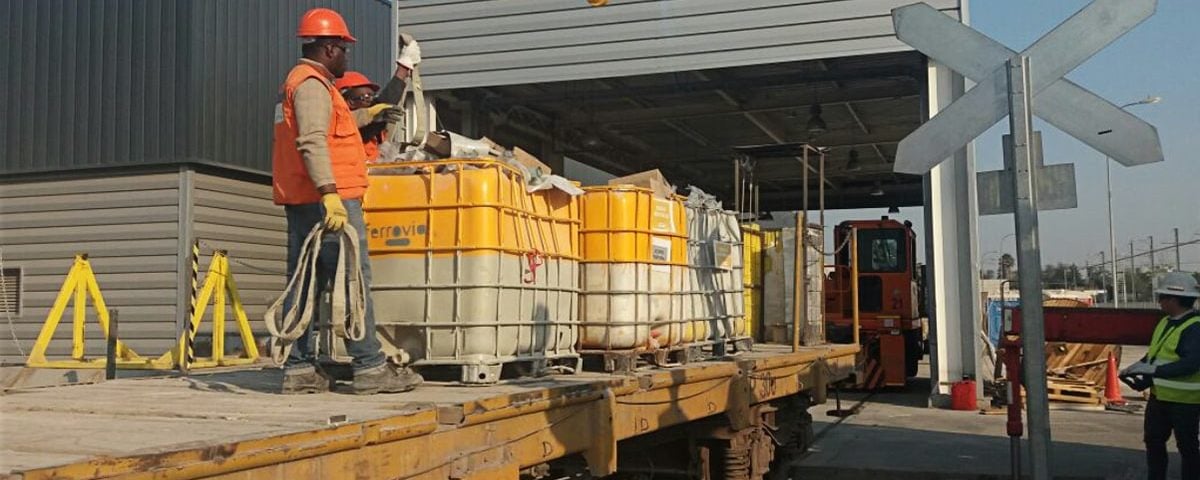
How We Bring Respect for the Environment into Subway Construction: A Story of Challenges and Opportunities
22 of February of 2021
Conveying the importance of respecting the environment is always a tricky task. It involves changing habits and implementing good practices. When it comes to ensuring proper environmental management for a large project, there are even more challenges. Every situation is unique, and new challenges and unforeseen specificities arise with every step we take.
Santiago de Chile’s new metro lines is a good example of the challenges posed by mitigating the environmental impact of a complex, large project. It demonstrates the importance of creativity and teamwork in dealing with difficulties. In short, this project allowed me to grow personally and professionally while doing my part to improve the city’s sustainable development.
Projects for improving sustainability
Metro line 6 meant significant change for the city of Santiago de Chile, which currently has one of the most modern metro lines in Latin America. Its new stations have allowed 1.1 million people to be able to take the subway every day instead of using their private vehicles or other modes of transportation like the bus. This has reduced road traffic in the city, resulting in fewer traffic jams and lower greenhouse gas emissions. In addition, it allows each of its passengers to save about an hour a day on trips; which translates into an additional hour a day that they have for their personal enjoyment.
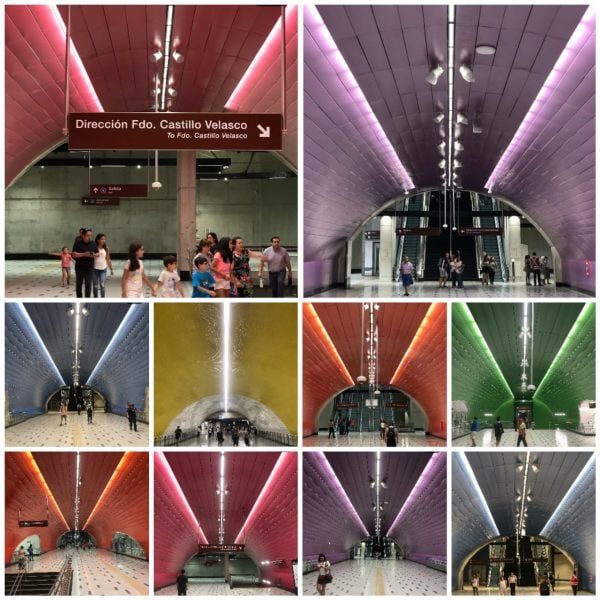
However, creating new metro lines involves highly complex construction that requires protecting the environment. This is where my job comes in: coordinating environmental management and ensuring that the activities impact the natural environment and the communities that live and work in the surrounding area as little as possible.
One of the most complex challenges is undoubtedly coordinating waste removal and management. In construction on line 3, we ran into further difficulties. Unlike line 6, Ferrovial wasn’t in charge of construction, only the station cladding. This meant that we were responsible for the construction and installation of the stations’ linings. The remaining 16 stations were not part of our responsibility.
This was a major challenge: how could we remove waste from this underground construction, which we weren’t operating, without hindering all of the other tasks? At this point, we decided to innovate, devising our own system for sorting and removing waste.
Oil drums, a moving truck, and an innovative idea
The solution we landed on was based on a very simple yet highly effective idea: reusing oil drums to create our own storage system. Their upper part was cut in order to be able to use them as containers. For the collection of non-hazardous waste, we use IBC plastic tanks with a capacity of 1000 liters. In the case of hazardous waste like the toxic resins that were used to glue the coatings, we were able to reuse 200-liter metal drums. By doing so, we ensured an adequate process for waste collection.
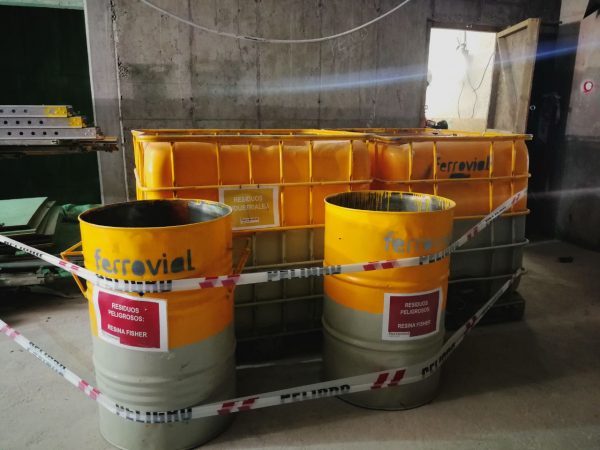
To remove them from the site, we used the same moving truck used to bring materials in. We equipped it with metal containers where we put the cans and drums, sending them away when full and bringing them back empty. The truck regularly went to each and every one of the 16 stations on the site. To organize waste collection, we opted for the quickest, easiest option: a WhatsApp group.
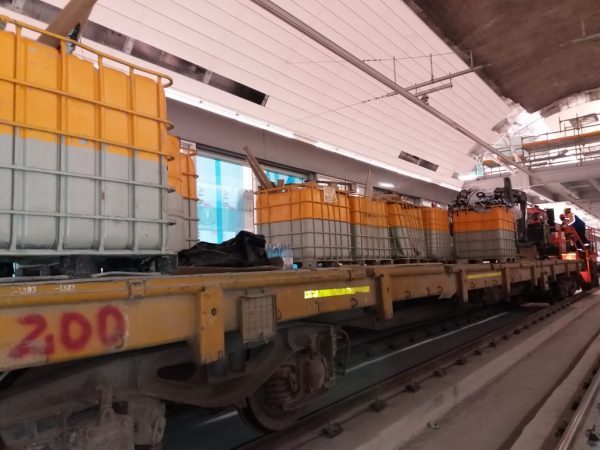
Another big challenge on line 3 was managing liquid materials like grout, the residue left by making concrete. In this case, we used the drum system again but with one key difference: we had to get them to the waste management areas quickly. If we didn’t, the grout would solidify. This required us to stay highly coordinated and work quickly.
One of the biggest and least visible challenge was not only generating waste but logistical surplus. We used BIM methodology in our logistics in order to reduce material surpluses by 90% compared to the same jobs on line 6.
The importance of awareness
Much of my work in this project involved training, educating, and raising awareness among our own workers. Setting up good practices is essential but also quite complicated. This is primarily due to the fact that each team has its own peculiarities, and each project presents its own unique problems. We are talking about teams operating in a 22 kilometers radius and 18 stations. This level of operation makes it necessary to adapt the training methods for each team.
However, certain lines are always the same. I like to point out that we’re visitors on every construction site. Therefore, we must behave appropriately, minimizing our impact there as much as possible: collecting garbage properly, not making annoying noises, respecting neighbors, and treating the environment responsibly. These messages really have to get through since we aim to train people with integrity, instilling in them a care for the environment’s health both at work and at home.
Our relationship with the community also comes into play – and it can present challenges. One of our sites on line 6, for example, began to be used as an illegal garbage dump. Early in the morning, trucks would arrive and deposit garbage and debris there. On another occasion, we found that a neighbor had abandoned a mare there.
In situations like this, we have to take charge of the situation, notify the municipality, and find steps to address it. It was also helpful to ask ourselves how our good practices could be a way to try to impact the environment positively. This is a complicated task, but it often pays off. It’s therefore quite rewarding.
In the end, it all comes down to commitment and perseverance. We must know how to manage teams in a way that generates collective awareness so that everyone takes care of the trees, they avoid accidental contamination, they separate the waste and that they are proactive in the measures that they take, among others.
Challenges and opportunities
The Santiago de Chile subway project was full of both challenges and opportunities. Participating in such a major, iconic project was so satisfying, both personally and professionally. It allowed me to take part in construction that is so necessary for the city, contributing my knowledge to this project.
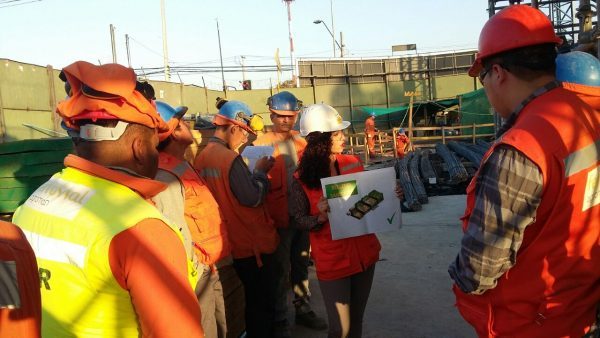
This achievement would not have been possible without the help of Seida González, who has always seen in me great potential and has guided me to obtain the best result in each task. I was also fortunate enough to have the support of Ricardo Munguía, who always trusted me and gave me the opportunity to execute the project. Professionals like him are committed to bringing innovation to every project and use the team’s ideas to find the right solutions.
Ricardo has also nominated me for the Wice Awards in the Best Woman in Environment and Sustainability category for my work on the Santiago de Chile subway. This once again goes to show the value of believing in young talent and committing to new ways of approaching the work that we do.





There are no comments yet